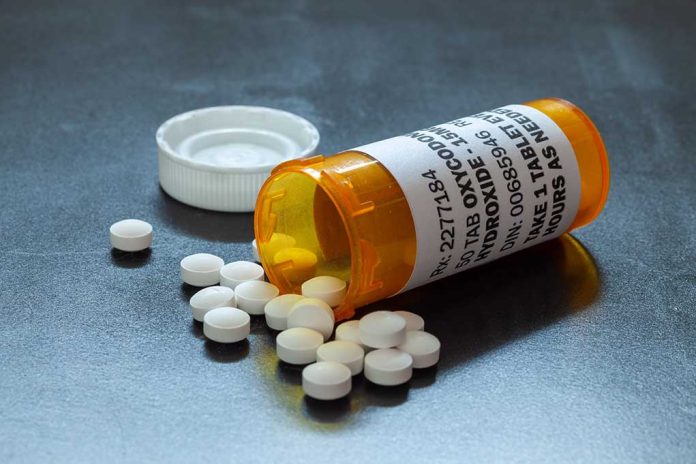
Opioid overdose deaths in the United States have fallen to their lowest levels since 2020, marking a significant turning point in the nation’s battle against drug addiction.
At a Glance
- CDC estimates show opioid overdose deaths have decreased for 12 consecutive months.
- Approximately 70,655 opioid-related deaths have been reported for the year ending June 2024, an 18% decrease from 2023.
- Most states are experiencing significant decreases in overdose death rates.
- Improved access to naloxone and prevention initiatives are contributing to the decline.
- Native Americans and Black American men are not seeing decreases in death rates.
A Turning Point in the Opioid Crisis
The Centers for Disease Control and Prevention (CDC) has reported a consistent decline in opioid overdose deaths over the past year, reaching the lowest levels recorded since 2020. This marks a potential turning point in the nation’s long-standing battle against the opioid epidemic. The estimated toll of opioid-related deaths, involving drugs such as heroin and fentanyl, is projected to be around 70,655 by June 2024, representing an 18% decrease from the previous year.
This decline is not limited to opioids alone. The CDC data also indicates a decrease in overdoses from other drugs like methamphetamine and cocaine nationwide. Most states, particularly those in the eastern United States, are experiencing significant reductions in overdose death rates, with some reporting declines of 20-30%.
Opioid overdose deaths drop for 12th straight month, now lowest since 2020. https://t.co/KCRrwPzkTH
— CBS News (@CBSNews) November 14, 2024
Factors Contributing to the Decline
Several factors have contributed to this encouraging trend. Improved access to naloxone, commonly known as Narcan, has played a crucial role in reversing opioid overdoses. Strategic prevention initiatives and enhanced access to medications for opioid use disorder have also made significant impacts. Additionally, primary prevention efforts have improved, resulting in fewer people initiating drug use.
“While these data are cause for optimism, we must not lose sight of the fact that nearly 100,000 people are still estimated to be dying annually from drug overdose in the U.S.,” says Dr. Nora Volkow, director of the National Institute on Drug Abuse.
The CDC has also improved its data collection and analysis capabilities, allowing for quicker responses to overdose surges. Some experts theorize that changes in the illegal drug supply, including the presence of xylazine, may have inadvertently contributed to reduced injection drug use and, consequently, fewer overdoses.
Ongoing Challenges and Disparities
Despite the overall positive trend, significant challenges remain. The total number of drug overdose deaths in the United States continues to be alarmingly high. Moreover, certain populations are not experiencing the same reductions in death rates as others.
“Unfortunately, for the most affected groups, namely Native Americans and Black American men, the death rates are not decreasing and are at the highest recorded levels,” says Volkow.
This disparity highlights the need for targeted interventions and support for communities disproportionately affected by the opioid crisis. The White House drug czar, Dr. Rahul Gupta, has emphasized the need for more funding for addiction treatment, especially in marginalized communities.
Looking Ahead: Cautious Optimism and Continued Efforts
While the current data provides reason for optimism, experts stress the importance of maintaining and expanding successful strategies. Dr. Allison Arwady, a public health official, emphasized the need to “double down on the things that we know are working” rather than pulling back on efforts. The evolving nature of the drug crisis demands continued vigilance and adaptation of prevention and treatment approaches.
As the nation continues to grapple with the opioid epidemic, this recent decline in overdose deaths offers a glimmer of hope. However, it also serves as a reminder of the work that remains to be done to address this complex public health crisis and ensure that all communities benefit from these improvements.








